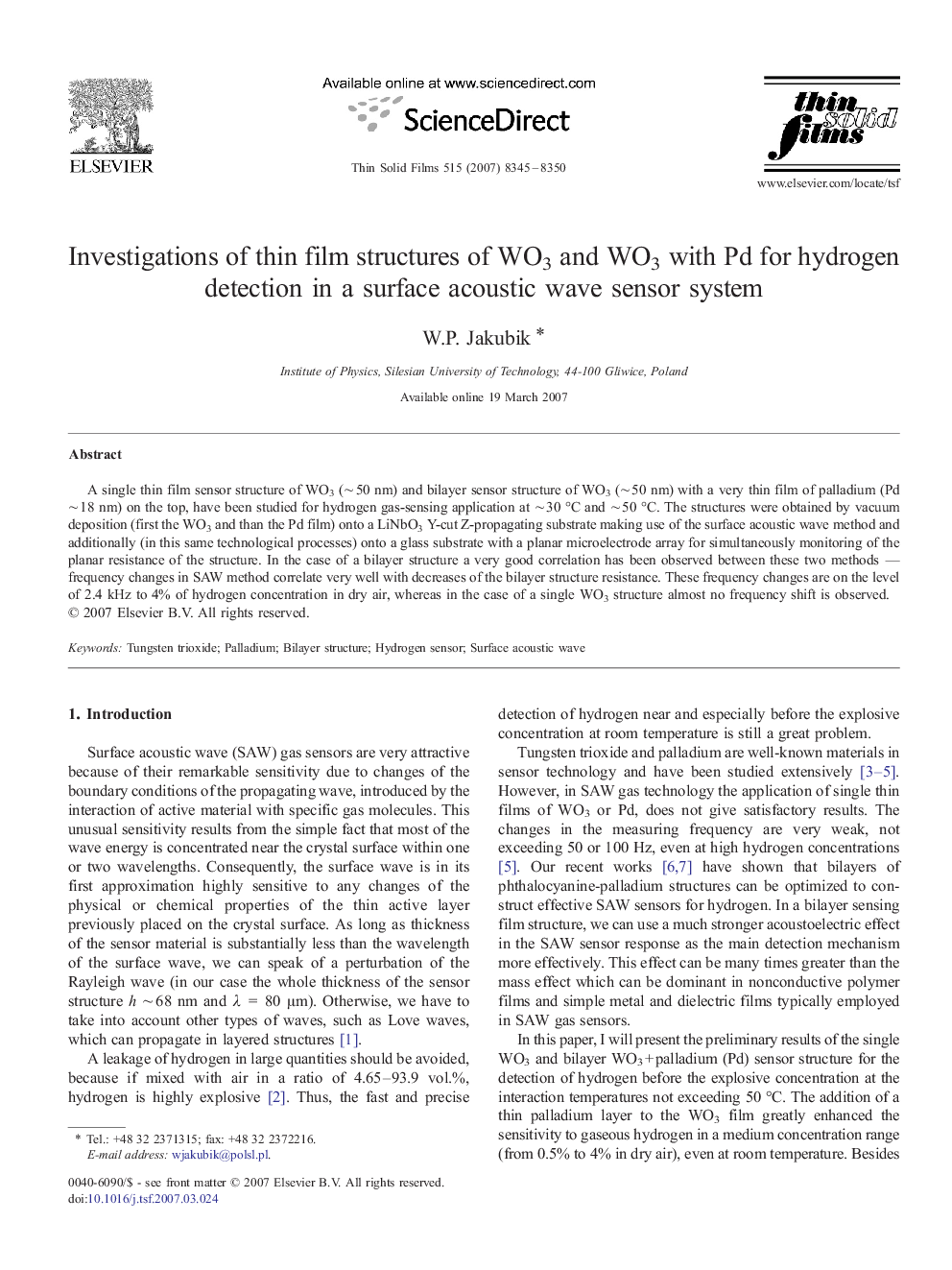| Article ID | Journal | Published Year | Pages | File Type |
|---|---|---|---|---|
| 1671906 | Thin Solid Films | 2007 | 6 Pages |
A single thin film sensor structure of WO3 (∼ 50 nm) and bilayer sensor structure of WO3 (∼ 50 nm) with a very thin film of palladium (Pd ∼ 18 nm) on the top, have been studied for hydrogen gas-sensing application at ∼ 30 °C and ∼ 50 °C. The structures were obtained by vacuum deposition (first the WO3 and than the Pd film) onto a LiNbO3 Y-cut Z-propagating substrate making use of the surface acoustic wave method and additionally (in this same technological processes) onto a glass substrate with a planar microelectrode array for simultaneously monitoring of the planar resistance of the structure. In the case of a bilayer structure a very good correlation has been observed between these two methods — frequency changes in SAW method correlate very well with decreases of the bilayer structure resistance. These frequency changes are on the level of 2.4 kHz to 4% of hydrogen concentration in dry air, whereas in the case of a single WO3 structure almost no frequency shift is observed.
